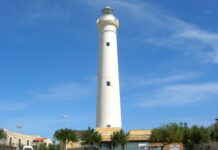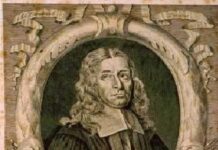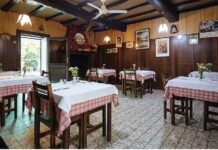In Milan, at the Basilica of Sant’Eustorgio on Corso di Porta Ticinese, there is a chapel that houses the “tomb of the Magi (Three Magi or Three Wise Men)”. It is a colossal stone sarcophagus from the Roman era. According to legend, Eustorgio, the Bishop of Milan in the 4th century, was instructed by Emperor Constantine to present the remains of the three Wise Men to Milan in 325 AD. The cart carrying their relics, pulled by two oxen from Constantinople, was unable to pass through Porta Ticinese upon reaching the city gates.
Eustorgio interpreted this as a divine sign and decided to found a church there to house the sacred relics of the Magi. This same church later became the final resting place for the bishop’s remains after his death in 355 AD and took his name.
 The Magi, known throughout Europe as Gaspar, Melchior, and Balthazar, were nicknamed by the people of Milan as Dionigi, Rustico, and Eleuterio. The episode at Porta Ticinese (4th century) is linked to the tradition that designated archbishops were required to enter the city through this gate. There was also a stop at Sant’Eustorgio to receive the first homage from the faithful and the authorities.
The Magi, known throughout Europe as Gaspar, Melchior, and Balthazar, were nicknamed by the people of Milan as Dionigi, Rustico, and Eleuterio. The episode at Porta Ticinese (4th century) is linked to the tradition that designated archbishops were required to enter the city through this gate. There was also a stop at Sant’Eustorgio to receive the first homage from the faithful and the authorities.
The “Theft” by Frederick Barbarossa and the Tomb of the Magi

In 1162, during the destruction of the Lombard capital, Emperor Frederick Barbarossa ordered the church to be destroyed and seized the relics of the Magi.
In 1164, he had them transferred to the Cathedral of Cologne in Germany, where they are still kept in a precious reliquary today. It took more than 800 years for Milan to recover part of what had been taken from it.

On January 3, 1904, Archbishop Fischer of Cologne offered Cardinal Ferrari, Archbishop of Milan, some bone fragments of the Wise Men’s remains. These remains – a tibia, a vertebra, and two brooches – were reinterred in Sant’Eustorgio. They were placed in a bronze urn next to the ancient empty shrine, inscribed with the words “Sepulcrum Trium Magorum” (tomb of the Magi).
This inscription was engraved beneath an eight-pointed star, which is still visible today.
Read also:












